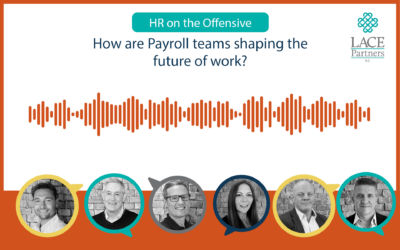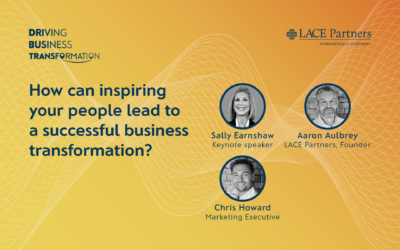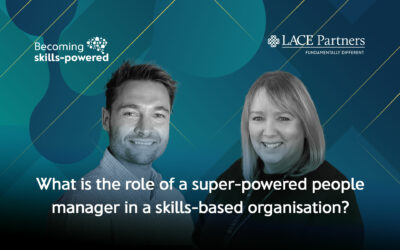“What more could I possibly do?” cries the candidate on their fifth interview for the same position. Has the danger of over-interviewing been underestimated, with skills shortages dominating headlines internationally?
Setting the over-interviewing scene…
The UK economic outlook appears to be turning a corner, one of the biggest challenges organisations are still facing is driving greater productivity, with many organisations still facing clear cost pressures. At the same time, there is a smaller workforce with record numbers of people leaving work due to long-term sickness. The markets have welcomed the recent change in Government, but the focus on improving growth and productivity is seen by many as an essential component of improving the UK economy’s overall outlook.
Against this backdrop, extended interviewing processes can lead to dropouts through the process, extend the time to hire and therefore, time to productivity.
Recent changes to talent acquisition approaches have been well-intentioned and necessary through greater transparency and compliance embedded in the recruitment processes; a robust process across initiatives such as DEI strategies, social mobility, etc, can unintentionally lead to more interviews.
But that poses a problem because in a market where skills shortages are well documented, extending your hiring processes can be the difference between getting top talent and not.
The biggest question that organisations face right now is:
How do we ensure we are delivering on the need to be compliant (DEI, social mobility, gender equality, etc) to ensure a robust, fair and ethical recruitment process, without over-burdening our other requirements (like cultural fit of the person, their competency to deliver on the technical part of the role, etc)?
Can employers afford to be picky?
There’s no simple answer to this – it can depend on the industry and skills needed or attrition experienced. The picture is quite mixed based on the skills that you need.
The tech sector layoffs continued in 2024 but that doesn’t mean that employees have their pick of the talent pool; depending on the demand level of specific skills, particular talent demand (for example, in the AI and cyber security space) will always continue to remain high. Candidates can still reject overly elaborate processes, so organisations must be mindful of this when mapping out their hiring strategies and the candidate experience. On the other hand, vacancies in lower-skilled jobs, such as the hospitality sector where they can’t find enough people, mean that cutting that time-to-hire becomes of paramount importance – employers need to be mind of this so flexing your approach to interviewing based on demand is an important factor in defining your interview process. Some roles will invariably need to have a detailed approach that might require technical and specific knowledge, but the most important element for any organisation should always be the transparency of the process.
A lot of this comes from the beginning of your processes. Designing your talent attraction process doesn’t start and end with the role’s advertisement; if you have a clear structure for how and what is being communicated to candidates, you can apply the principles whether you are interviewing one, 10, 100 or a thousand candidates.
How could over-interviewing impact your reputation?
Candidates now have a greater voice through platforms like Glassdoor and LinkedIn, where they can either advocate for a brand or detract from it, so if your processes are too elaborate, your talent pool will know about it rapidly and that could also shrink your pipeline.
In organisations that undertake project work or are more matrix-based in the tasks set out, there might be a need to have more interviews in the process because there is a requirement to work with more stakeholders. But there is a balance to be struck. The key to avoiding over-interviewing is empathy. How the candidate views your business can inferred by the candidate as a wider example of how your business operates; “do I want to work in an organisation that drags out their recruitment process? If they do this now, what is it going to be like working here on other projects?”
At LACE we talk about how organisations are realising that an employee experience revolution is taking place, the importance of thinking holistically about EX and that it is not the sole preserve of the HR function. The principles of thinking holistically about EX can be applied to the candidate attraction process too; your employee value proposition (EVP) is the deal that you offer to your employees but that starts before they join the organisation; if they believe that your processes are over-elaborate, they will apply the same thinking to what your culture is, how their future line manager will behave when making decisions, etc.
Is AI and video interviewing technology the answer to streamlining the interviewing process?
Technology and AI play their part in the sifting process, and coupled with video-based interviewing, the screening and selection from that initial application can help the bandwidth of the Talent team. However, employers have to be thoughtful about the candidates targeted and what their experience feels like, especially when hiring at the more senior end. Having a holistic perspective on the candidate experience is key here; one candidate might be applying for multiple roles and lengthening the process of interviewing not only impacts the probability of hiring that candidate, but it also impacts their initial perspective on what it is like to work at your business.
Technology can be an enabler, but it cannot replace the interaction side of the interviewing process; it is not the panacea to cut down and avoid candidate frustration through too many interviews. Where technical knowledge of a role can potentially help alleviate the need for extra interviews through testing and screening, it can complement and cut down the interview time, but ultimately, you are hiring a person to do a job and that will require collaboration and interaction.
Getting the balance right – it isn’t always about the interview process
Taking a skills-based perspective on your talent identification and acquisition could help you get the balance right. That starts not just with the talent attraction process, but by looking at how your organisation is set up to deliver on the skills you need for the future. If you are looking for an increased capability to adapt to the changes of AI in your business, for example, do you already have people with those skills within your organisation that you still need to capture? What if there are people within your business that are passionate about this, but your internal mobility processes (or the way you capture skills taxonomy in your organisation) don’t allow them to cater for the demand you need? If you already have somebody embedded within the organisation, the question on cultural fit becomes less of an issue. If you’re looking at over-interviewing as one of the barriers and issues you have, perhaps there are other exam questions you could be asking yourself that get to the real exam question, which is:
How do we ensure we have the skills in our business to deliver on our objectives? Is shortening our interview process for our external hiring (and potential overly complex interview processes) really the answer?
In the next few weeks, we’re going to launch a campaign on how organisations can become skills-powered. If you’d like to be kept informed of the latest developments, fill in the form below and let us know what your current challenges are.






